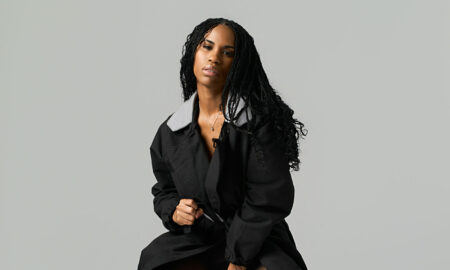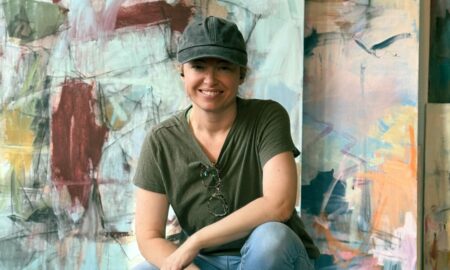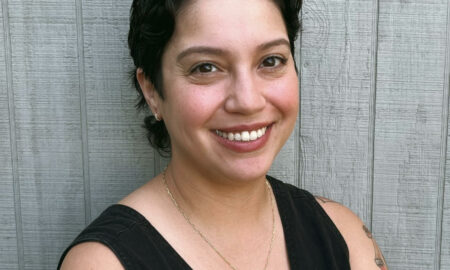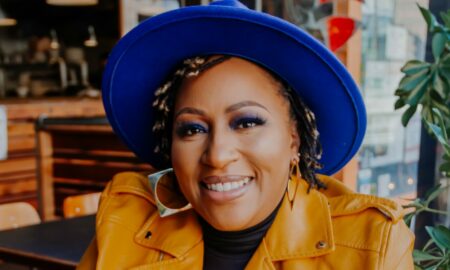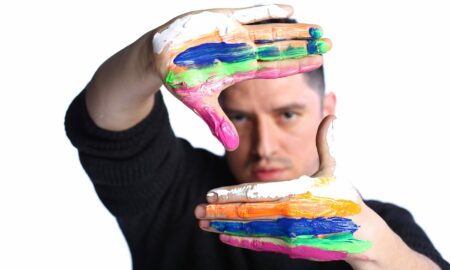

Today we’d like to introduce you to Camryn Stafford.
Camryn, please share your story with us. How did you get to where you are today?
I have never considered the question: “Is it because I am Black?” because it often sounds like a convenient way to redirect a personal shortcoming to someone else; however, I couldn’t help but wonder as I stood in the dance studio, at the ballet barre, surrounded by all of those assigned to my beginners-level ballet class, “Is it because we are all Black?”
I observed the patterns, noticing that the majority of the Caucasian dancers got the parts in the dance pieces, the skinnier girls were lauded during ballet class, and performance opportunities were awarded to those who had internal connections. It seemed that the talent aspect of the dance art form came secondary to unrelated factors of race, body shape, and connections. This left little opportunity for minorities like myself to advance in the dance world; however, I was determined to wake up the world around me, starting at my high school, Booker T. Washington High School for the Performing and Visual Arts.
Reflecting on the issues I found to be most prevalent in the dance world and my environment, I decided to explore the underrepresentation in ballet, the implicit bias, and the double standard. I chose choreography as an outlet for my concerns, addressing these issues in a way that allowed audience members to gain a new perspective on the issues without feeling as though they were being reprimanded or forced to conform to a different point of view. Initiating a conversation through choreography proved to be a logical first step in solving the problem of perspective.
To bring awareness to the inherent discrimination that exists within the dance world, I created my own initiative entitled “Turning Tables”, which is an annual dance performance that featured choreography from myself, professional dancers, professional choreographers, and selected student choreographers from Booker T. Washington HSPVA. Each piece is crafted with hopes of highlighting the overlooked social issues in dance. The dancers represent a variety of dance levels, cultural identities, body types, and socioeconomic backgrounds – all emphasizing the themes of inclusivity and equality. The past two Turning Tables performances had captivated audiences of over 400 people, who expressed their satisfaction in having their artistic senses engaged and their perspectives broadened.
Since it’s inception, Turning Tables has extended its mission to offer underrepresented groups dance programs through the Boys & Girls Clubs of Greater Dallas. It is important to introduce young people to dance, in the hope that they will begin to consider dance as a viable career option that should not be inhibited by one’s own connections, background, or race.
I never would have imagined that my concerns would become my platform; however, some may say that my platform is nothing more than a “race card”. That may be the perspective of some, and it’s definitely easier for some to assume such a posture than to examine the position. On the contrary, Turning Tables encompasses my vision, and I’ve spent countless hours creating an accomplishment out of a personal challenge by choreographing, planning, and teaching to ensure the effective portrayal of that vision. It is my hope that others will be encouraged to grow as I have, as well as to take this opportunity to continue to address concerns, to channel their complaints, and to challenge the unjust. By simultaneously setting the standard and raising the bar, I want to emphasize that not everyone may be ready, but those who deserve an opportunity to succeed in dance.
Great, so let’s dig a little deeper into the story – has it been an easy path overall and if not, what were the challenges you’ve had to overcome?
As my organization continues to grow, I have run into the challenge of people not taking Turning Tables as serious as it is. As a young person, it is more difficult to get proper recognition, sponsorships, and a following. Turning Tables is separate from me. It is a revolution in the making and should be treated as such.
Turning Tables – what should we know? What do you do best? What sets you apart from the competition?
The dance art form can be perceived as elitist, eliminating the opportunity for minorities to envision themselves as dancers. Turning Tables was created with a goal to bridge the gap between minorities and dance. By fostering the opportunity to underrepresented youth and by exposing dance as a viable career option, Turning Tables strives to give minorities visibility to dance so that they can feel as though they are equally capable to participate and succeed as their more advantaged counterparts. Turning Tables is about changing the perspective on how society views dance as an art form.
Turning Tables is a dance initiative project that brings awareness to the need for diversity in dance through choreography, scholarship, and outreach initiatives. Each year we hold an annual dance concert, that presents choreography from student choreographers and professional choreographers. Each piece addresses different issues pertaining to discrimination in dance. Turning Tables is a unique show in that it follows a consistent theme throughout the performance and introduces audience members to a new perspective.
Turning Tables has extended an outreach program to the children at the Boys and Girls Club of Greater Dallas. Our goal is to teach children dance and to socialize dance as a viable career option that should not be prohibited by one’s background or race. The goal of the outreach program is to technically equip these kids in dance so that they can succeed in the same way as their more advantaged counterparts.
As my organization continues to grow, I have run into the challenge of people not taking Turning Tables as serious as it is. As a young person, it is more difficult to get proper recognition, sponsorships, and a following. Turning Tables is separate from me. It is a revolution in the making and should be treated as such.
What moment in your career do you look back most fondly on?
The most gratifying feeling is seeing everyone in the audience during the show each year. It is amazing to be reaffirmed that my perspective is valid and people care enough to have their perspectives challenged. The roars of applause and the buzz of energy are validating that Turning Tables is making a difference and changing how people view dance.
Contact Info:
- Website: www.turningtablesproject.com
- Phone: 214-762-5876
- Email: info@turningtablesproject.com
- Instagram: instagram.com/turningtablesproject.com
- Facebook: https://www.facebook.com/turningtablesproject








Image Credit:
Alex Travell
Suggest a story: VoyageDallas is built on recommendations from the community; it’s how we uncover hidden gems, so if you or someone you know deserves recognition please let us know here.













